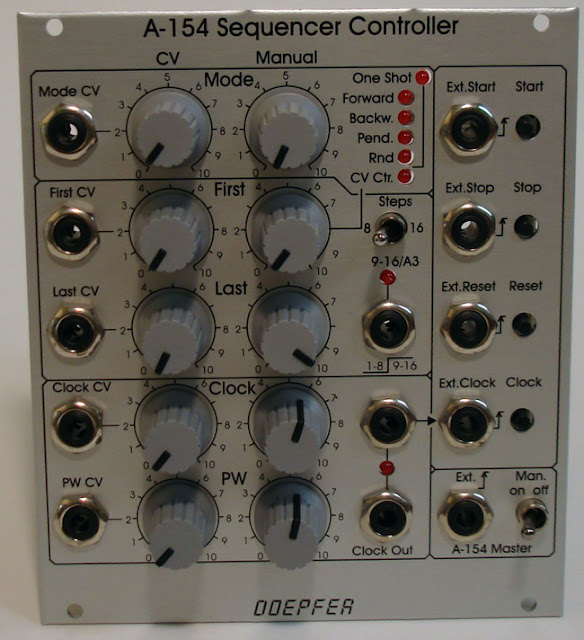
via
weisma where you'll also find a 2600 and 1611 sequencer.
"In the 1960s I was one of the
pioneers of contemporary electronic music in the Netherlands. In the 1970’s, when the portable ARP 2600 synthesizer was created by ARP Instruments, Inc., I decided to start my private electronic music studio “Five Roses”, using the ARP 2600 for studio compositions as well as live electro-acoustic performances. At a later stage, when the modular ARP 2500 synthesizer was introduced, I expanded the capabilities my studio step by step.

The ARP synthesizers have been the center of my work for many years, but as electronic music became mainstream, my focus shifted to acoustic contemporary music. It is therefore that I have decided to put up my now classical ARP 2500 and 2600 synthesizers for sale for the collector, or for the musician that wishes to explore the unique sound of these landmark analog synthesizers."

Details on the 2500:
1974 2515 Studio Cabinet with 15 module positions
SN 74-005
Modules:
"1002 Power Supply
SN 1974/30262
Power supply included with the cabinet.
1004T Voltage Controlled Oscillator
SN 1976/50246
Single precision voltage controlled oscillator offering five simultaneous waveform outputs: sine, triangle, square, sawtooth, and pulse. Provides frequency modulation, pulse width modulation and built-in waveform mixer. Also provides inverted waveform outputs.

1005 Modamp
SN 1976/40551
A complex function module containing a precision balanced modulator, a voltage controlled amplifier, and switching circuitry.
1006 Filtamp
SN 1977/30231
A combination of a voltage controlled low pass filter, a voltage controlled amplifier, and a mixer.

1016 Dual Noise / Random Voltage Generator
SN 1976/40480
Contains two independent noise sources and filters to derive pink noise and continuous slow random voltages. Slightly weak signals from both noise generators. Very weak signal from slow random noise generator A.
1023 Dual Voltage Controlled Oscillator
SN 1977/40266 Two precision voltage controlled oscillators offering five simultaneous waveform outputs: sine, triangle, square, sawtooth, and pulse. Provides frequency modulation, pulse width modulation, and built-in waveform mixer.
No signal from left oscillator.
1027 Ten Position Sequencer
1974/30250
Flexible sequential voltage generator. Capable of creating complex switching patterns with 30 preset voltages.
1033 Dual Delayed Exponential Envelope Generator
SN 1977/50122
A flexible envelope generator that includes a variable trigger delay.
1036 Dual Sample & Hold / Random Voltage Generator
SN 1977/50232 Contains two low-drift sample and hold circuits, two noise sources, and two voltage controlled pulse generators.
1045 Voltage Controlled Voice
SN 1974/30247
Combination of two Envelope Generators / Voltage Controlled Oscillator / Voltage Controller Filter / Voltage Controlled Amplifier. Used as preset voice.
1047 Multimode Filter / Resonator
SN 1974/30258
Combination high-pass, low-pass, band-pass and band-reject filter. Ultra-high Q. Voltage controlled center frequency and resonance.
1050 Mix/Sequencer
SN 1974/30053
A combination of a sequencer, mixer, and analog gate. Serves dozens of functions as a utility mixer, sequencer and preset function selector. This module is linked to the1027 sequencer module.
See
Donald Tillman’s page of resources and articles on ARP Synthesizers and
Guitar Fool’s ARP 2500 Synthesizer Pages for more information, including manuals and schematics."

































































